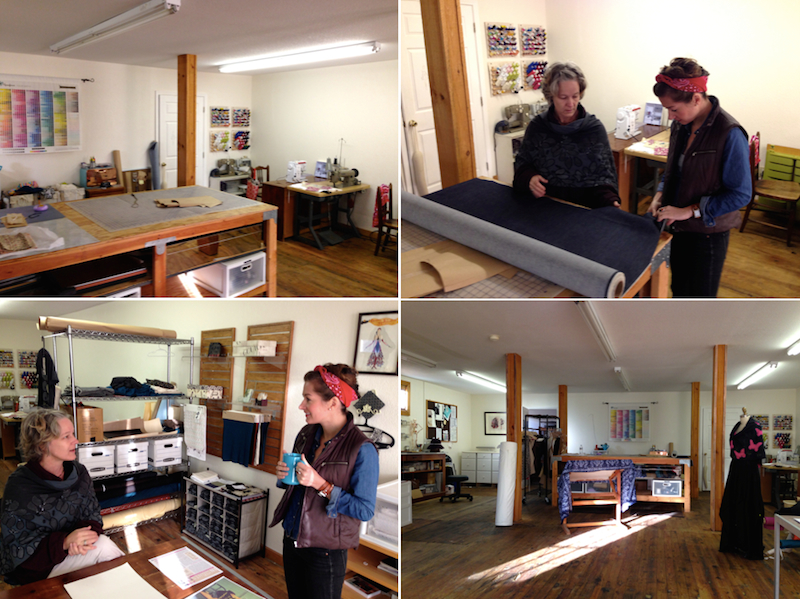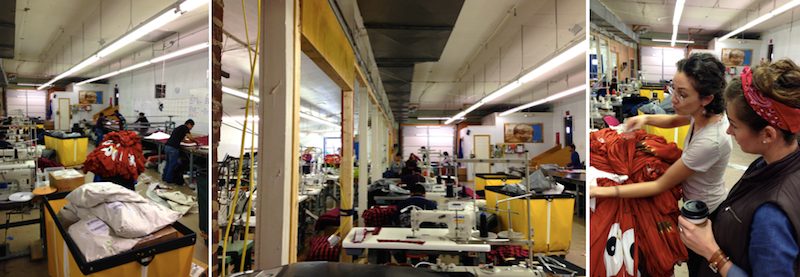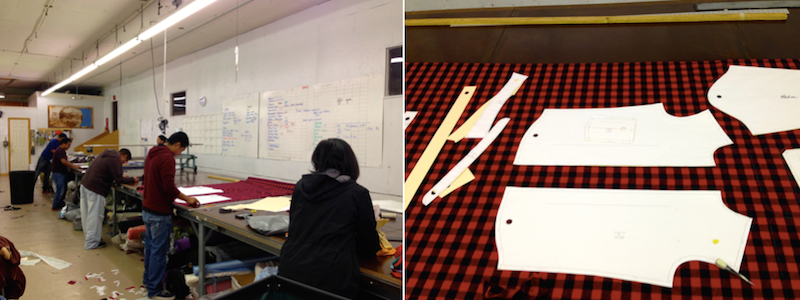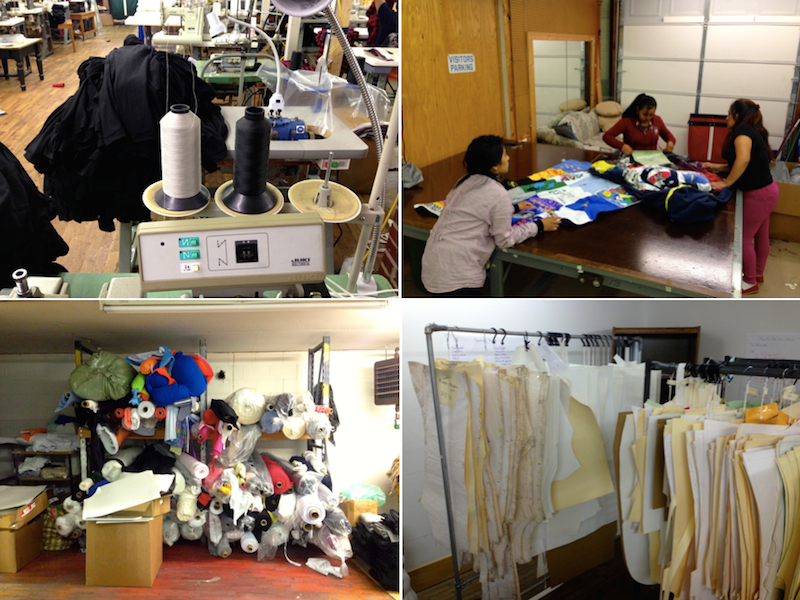This weekend I flew to Charlotte, North Carolina to visit designers, sewers, project managers, and other industry professionals I’ve only before had a chance to speak with by phone or email.

It never fails to amaze me how much goes into making our clothes, and I’m always grateful to get an inside look at the process. After a weekend exploring downtown Asheville, I started Monday morning bright and early in Burnsville, NC to meet designer Kristin Alexandra Tidwell of Be Well Designed.
Three Factory45’ers are working with Kristin on concept designs, samples and patterns, so it was a long overdue treat to meet in her studio. Kristin has an extensive background in design, patterning and samplemaking, and it was awesome to see where all of the magic happens.
 From Burnsville, I headed to Morganton to visit Opportunity Threads, a worker-owned cut and sew facility that has been able to successfully change the traditional business model to one that is as empowering for the sewers as it is for the project managers.
From Burnsville, I headed to Morganton to visit Opportunity Threads, a worker-owned cut and sew facility that has been able to successfully change the traditional business model to one that is as empowering for the sewers as it is for the project managers.
 Molly Hemstreet, who oversees Opportunity Threads, has been an amazing resource and connection for me throughout the past year, and it already felt like I knew her when I walked inside. She gave me a tour of the facility, shared their plans for expansion, and showed me some of the products they’re working on. OT has been able to steadily grow since they opened their doors in 2008 and are nearly busting at the seams six years later.
Molly Hemstreet, who oversees Opportunity Threads, has been an amazing resource and connection for me throughout the past year, and it already felt like I knew her when I walked inside. She gave me a tour of the facility, shared their plans for expansion, and showed me some of the products they’re working on. OT has been able to steadily grow since they opened their doors in 2008 and are nearly busting at the seams six years later.
 There is a prominent Mayan population in Morganton and several of the skilled sewers have come into OT with factory experience from Guatemala. Through the Opportunity Threads model, they have autonomy to track their own output and have a direct stake in profit and losses. From an outsider’s perspective, this balance of independence, leadership and collaboration was something I hadn’t seen in similar facilities before and it was incredibly refreshing.
There is a prominent Mayan population in Morganton and several of the skilled sewers have come into OT with factory experience from Guatemala. Through the Opportunity Threads model, they have autonomy to track their own output and have a direct stake in profit and losses. From an outsider’s perspective, this balance of independence, leadership and collaboration was something I hadn’t seen in similar facilities before and it was incredibly refreshing.

Both Be Well Designed and Opportunity Threads are members of the Carolina Textile District, a network of textile manufacturers, sewers, printers and professionals that help entrepreneurs start made in the USA businesses when they’re ready to go into production. I was able to also meet with Tanya Wade and Dan St. Louis who are two of the key players in making The District a long-term solution.
At the Manufacturing Solutions Center in Conover, NC, Tanya gave me a tour of the facility where they test everything from furniture to fibers to baby products, and house two 3-D printers. MSC is a non-profit that also serves as an incubator to product-based entrepreneurs in both the textile and tech spaces.

Both Tanya and Dan are collaborating with community leaders in NC, like Kristin and Molly, to “reshore” jobs back to the States and further grow the Made in the USA movement. They are the incredibly hardworking people behind the scenes, moving forward everyday to bring jobs back home.
—
So where does Factory45 fit into all of this? Based on conversations with Molly and Tanya, The District gets 5-8 emails a week from entrepreneurs looking for fabric suppliers and production partners. About 30-50 percent of those inquiries are from people who do not yet have a solid business plan, marketing strategy or brand vision.
If you’ve ever wondered, “Does a manufacturer really care if I have my marketing plan together?” the answer is is a resounding “YES.” Every project they take on is a personal investment, and The District does not take on entrepreneurs who do not have an initial business strategy in place.
With Factory45, I’m offering a solution for entrepreneurs to become “production-ready,” preparing them to work with resources like The District.
To learn more about the incredible people working in the Carolina Textile District, you can check out Be Well Designed, Opportunity Threads, Manufacturing Solutions Center & The District.


